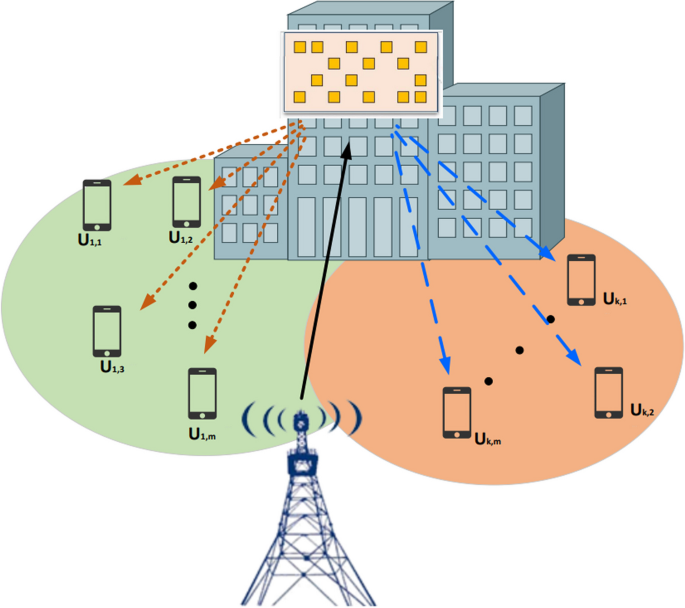不规则可重构智能表面辅助NOMA系统的吞吐量最大化
IF 1.9
4区 工程技术
Q3 ENGINEERING, ELECTRICAL & ELECTRONIC
Eurasip Journal on Advances in Signal Processing
Pub Date : 2023-11-01
DOI:10.1186/s13634-023-01076-1
引用次数: 0
摘要
可重构智能表面(RIS)是一种提高无线通信系统频谱效率的新兴技术。然而,波束设计的高度复杂性和与RIS相关的不可忽略的开销限制了在实践中可以部署的元件数量。在本文中,我们研究了辅助非正交多址(NOMA)系统的不规则部署智能反射面的下行通信。为了解决这一挑战,我们提出了一种新的四步资源分配算法。具体来说,我们首先使用模拟退火算法获得了RIS元素稀疏部署的次优解。然后,我们采用连续迭代不动点的整数优化算法来解决功率分配问题。为了简化和优化反射系数矩阵,我们提出了一种构造不等式算法。最后,利用遗传算法对信道分配进行优化。仿真结果表明,提出的不规则ris辅助NOMA系统优于传统ris辅助正交多址系统,最大吞吐量提高约30%。本文章由计算机程序翻译,如有差异,请以英文原文为准。

Throughput maximization for irregular reconfigurable intelligent surface assisted NOMA systems
Abstract Reconfigurable intelligent surface (RIS) is an emerging technology to improve the spectral efficiency of wireless communication systems. However, the high complexity of beam design and the non-negligible overhead associated with RIS limit the number of elements that can be deployed in practice. In this paper, we investigate the downlink communications of irregularly deployed intelligent reflecting surfaces that assist non-orthogonal multiple access (NOMA) systems. To address this challenge, we propose a novel four-step resource allocation algorithm. Specifically, we first obtain a sub-optimal solution for the sparse deployment of RIS elements using a Simulated Annealing Algorithm. We then solve the power allocation problem by employing an integer optimization algorithm that continuously iterates the immobile point. To simplify and optimize the reflection coefficient matrix, we propose a construction inequality algorithm. Finally, we optimize the channel assignment using a genetic algorithm. The simulation results demonstrate that the proposed irregular RIS-assisted NOMA system outperforms the traditional RIS-assisted orthogonal multiple access system, with a maximum throughput increase of approximately 30%.
求助全文
通过发布文献求助,成功后即可免费获取论文全文。
去求助
来源期刊

Eurasip Journal on Advances in Signal Processing
ENGINEERING, ELECTRICAL & ELECTRONIC-
CiteScore
3.40
自引率
10.50%
发文量
109
审稿时长
3-8 weeks
期刊介绍:
The aim of the EURASIP Journal on Advances in Signal Processing is to highlight the theoretical and practical aspects of signal processing in new and emerging technologies. The journal is directed as much at the practicing engineer as at the academic researcher. Authors of articles with novel contributions to the theory and/or practice of signal processing are welcome to submit their articles for consideration.
 求助内容:
求助内容: 应助结果提醒方式:
应助结果提醒方式:


